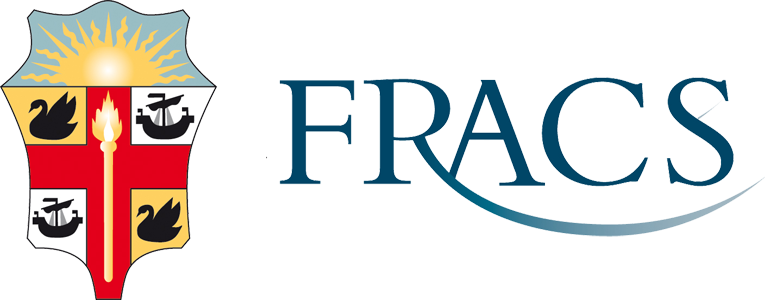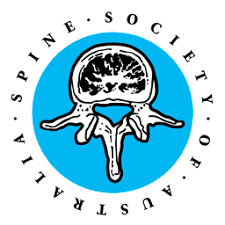About Neck & Arm Pain
What is Neck & Arm Pain?
Neck and arm pain can occur independently or together. It often arises from various conditions that affect the cervical spine (the neck region) and related structures. When both neck and arm pain are present together, it is often an indication of a problem impacting the nerves in the neck, leading to referred pain or numbness down the arm.
How Does Neck & Arm Pain Impact Your Health and Function?
Neck and arm pain can limit mobility and make it difficult to carry out everyday activities, causing discomfort or disability. If the cause of the pain is due to nerve impingement, this could lead to permanent nerve damage if left untreated, leading to chronic pain, muscle weakness, and loss of sensation.
The pain and reduced mobility can also impact your mental health, leading to frustration, anxiety, or depression. Additionally, chronic pain can interfere with your sleep and overall quality of life.
Who is Most at Risk for Neck & Arm Pain?
Certain individuals are at a higher risk for experiencing neck and arm pain, including:
- Older adults: Age is a major risk factor for many conditions that cause neck and arm pain, including arthritis and degenerative disc disease.
- People with physically demanding jobs: Individuals who perform heavy lifting, repetitive movements, or maintain poor posture for extended periods are more at risk.
- Individuals with sedentary lifestyles or poor posture: A lack of physical activity can lead to muscle weakness and poor posture, contributing to neck and arm pain. Spending long hours sitting, especially in front of a computer, can also increase the risk.
- People with certain medical conditions: Conditions such as rheumatoid arthritis, osteoarthritis, fibromyalgia, and certain infections or tumours can increase the risk of neck and arm pain.
- Individuals involved in certain sports or physical activities: Contact sports or activities that require repetitive arm movements or put stress on the neck can increase the risk of injuries that lead to neck and arm pain.
- Smokers: Smoking increases the risk of neck pain, possibly due to its role in promoting disc degeneration and because it slows the healing process.
Causes of Neck & Arm Pain
Neck and arm pain can be caused by various conditions, including:
- Cervical radiculopathy: A pinched nerve occurs when a nerve in the neck becomes compressed or irritated at the point where it branches away from the spinal cord. This can cause pain in the neck and arm, along with numbness or weakness.
- Cervical myelopathy specifically refers to spinal cord compression in the neck region. Unlike radiculopathy, which affects specific nerve roots, myelopathy can affect multiple body areas, as the spinal cord carries signals to and from various body parts.
- Cervical spondylosis: This is a general term for age-related wear and tear that affects the spinal disks in your neck. Over time, the disks dehydrate and shrink, causing signs of osteoarthritis, including bone spurs.
- Thoracic outlet syndrome occurs when the blood vessels or nerves in the space between your collarbone and your first rib (thoracic outlet) become compressed. This can cause pain in your shoulders and neck and numb fingers.
- Whiplash: A neck injury due to forceful, rapid back-and-forth neck movement, like the cracking of a whip. This often happens in car accidents but can also occur from sports injuries or physical abuse.
- Herniated disc: If the inner gel-like substance of a spinal disc leaks out, it can press on a nerve and cause neck and arm pain.
- Arthritis: Osteoarthritis can affect the joints in the neck and cause pain.
- Repetitive strain injury or overuse: Overusing the muscles and tendons in the neck and arm, often due to poor posture or repetitive movements, can lead to pain.
Symptoms of Neck & Arm Pain
Symptoms can vary based on the underlying cause but may include:
- Pain
- Numbness or tingling
- Weakness
- Limited range of motion
- Headaches
- Muscle stiffness
How are Neck & Arm Pain Diagnosed?
The neck and arm pain diagnosis begins with a detailed medical history and physical examination by your doctor. They may ask about the nature of the pain, any triggering or relieving factors, and any associated symptoms.
Diagnostic tests that can help identify the cause of neck and arm pain include:
- Imaging tests: X-rays can show the narrowing of the space between two spinal bones, arthritis-like diseases, tumours, slipped discs, narrowing of the spinal canal, fractures, and instability of the spinal column. CT and MRI scans can provide more detailed images of the neck and shoulder and help identify herniated discs or pinched nerves.
- Electromyography (EMG): This test measures the electrical activity in your nerves as they transmit messages to your muscles when they are contracting and at rest. This can help determine whether symptoms are due to a muscle or nerve disorder.
- Nerve conduction study: This test is often done with an EMG to determine if a nerve is functioning normally.
- Blood tests: These can help identify underlying conditions that might be causing or contributing to the pain, such as rheumatoid arthritis or infections.
Remember, a thorough evaluation by your doctor is essential in diagnosing the cause of neck and arm pain. An appropriate treatment plan can be developed based on the diagnosis to manage the pain and underlying condition.
How Can Neck & Arm Pain Be Treated?
The treatment for neck and arm pain often depends on the underlying cause, the severity of the symptoms, and the patient's overall health. Treatment may include:
- Physical therapy: Physical therapists can teach you exercises to help improve your flexibility, strength, and posture, which can help ease neck and arm pain over time.
- Medications: Nonsteroidal anti-inflammatory drugs (NSAIDs), acetaminophen, muscle relaxants, or corticosteroids can help reduce inflammation and pain. In cases of neuropathic pain, medications such as gabapentin or pregabalin might be used.
- Lifestyle modifications: These can include regular exercise, maintaining a healthy weight, quitting smoking, and practising good posture.
- Heat or cold therapy: Applying heat or cold to the affected areas may help relieve pain.
- Pain management techniques: These may include transcutaneous electrical nerve stimulation (TENS), massage, acupuncture, or relaxation techniques.
- Surgical treatment: In severe cases, surgery may be considered if the pain is caused by a herniated disc or spinal stenosis and conservative treatments have not been effective.
- Injections: Epidural steroid injections or nerve blocks can sometimes temporarily relieve pain.
What if Neck & Arm Pain is Untreated?
If neck and arm pain is left untreated, it can potentially lead to chronic pain and long-term disability. Chronic pain can interfere with daily activities and significantly affect the quality of life.
Additionally, untreated neck and arm pain from a condition like cervical radiculopathy or myelopathy can lead to irreversible nerve damage. This can result in persistent numbness, weakness, coordination problems, and in severe cases, loss of bowel or bladder control.
Emotional health can also be affected, as chronic pain can increase the risk of depression and anxiety.
It's important to consult with a neurosurgeon if you're experiencing persistent neck and arm pain. They can help identify the cause and develop an appropriate treatment plan to manage the symptoms and prevent potential complications.



